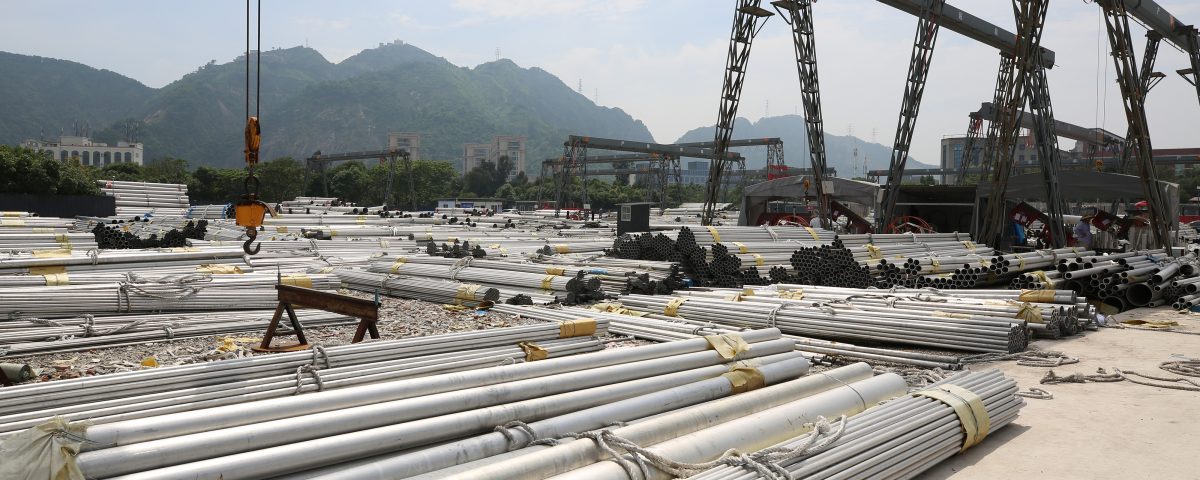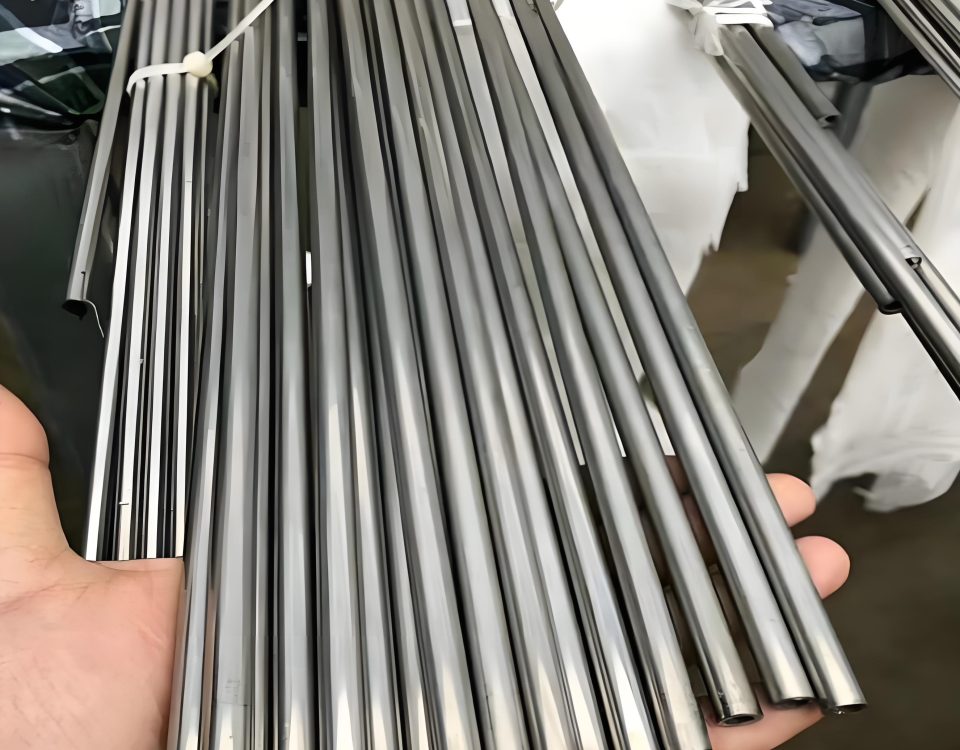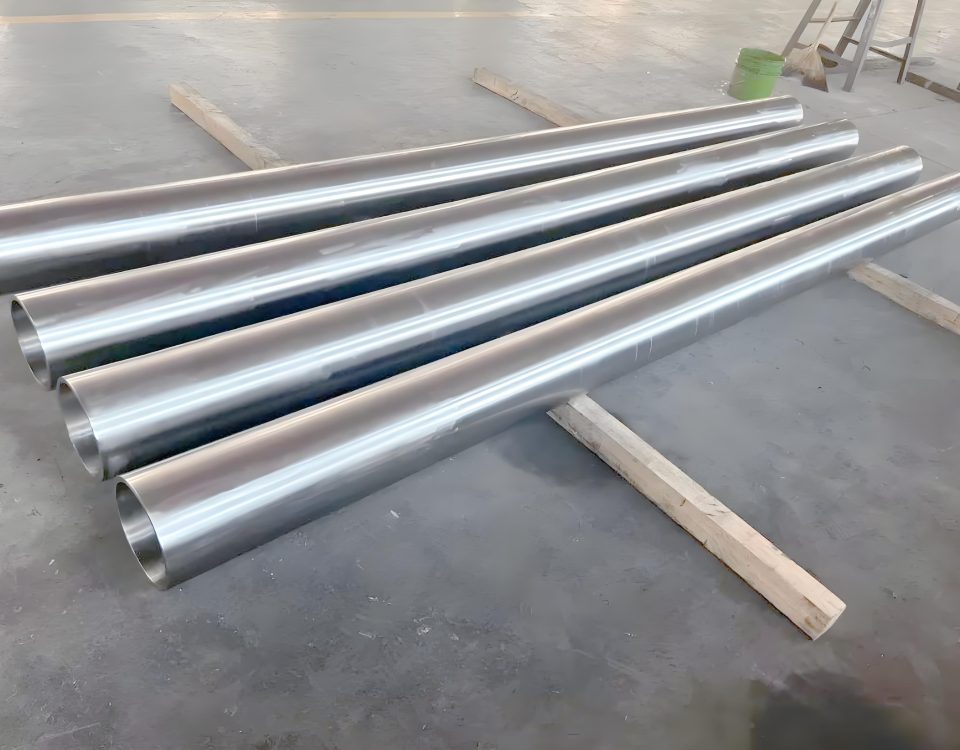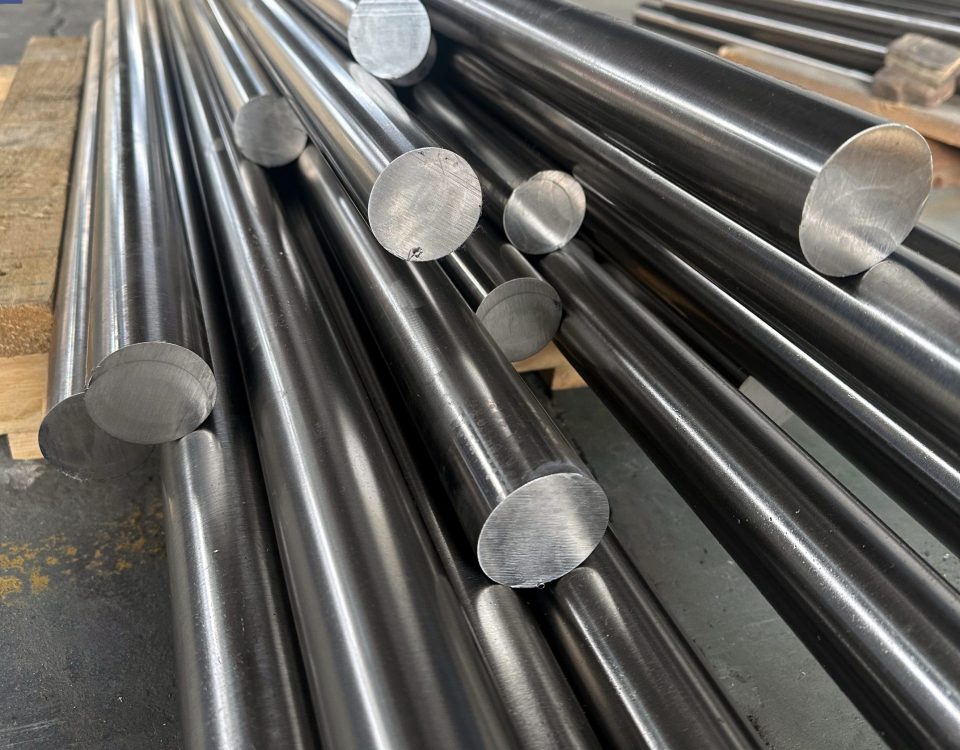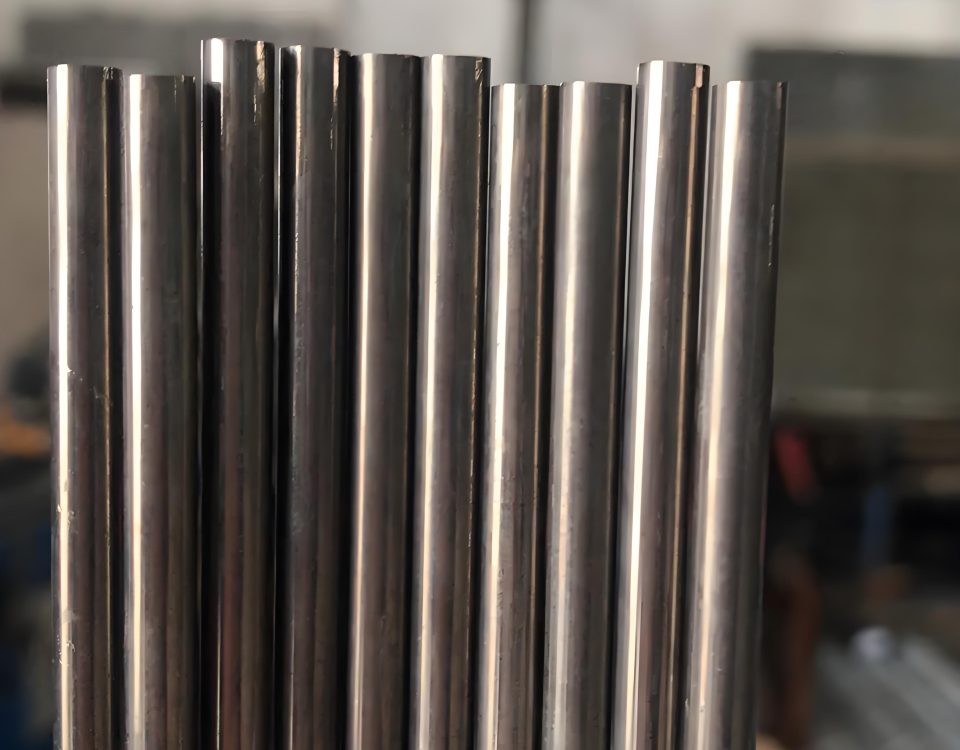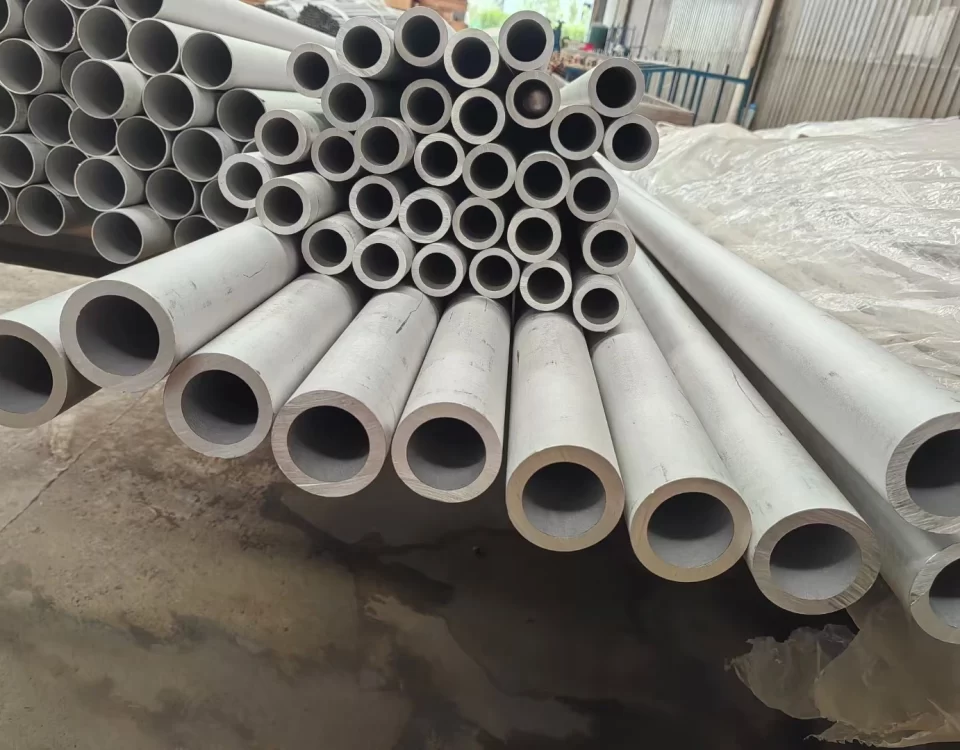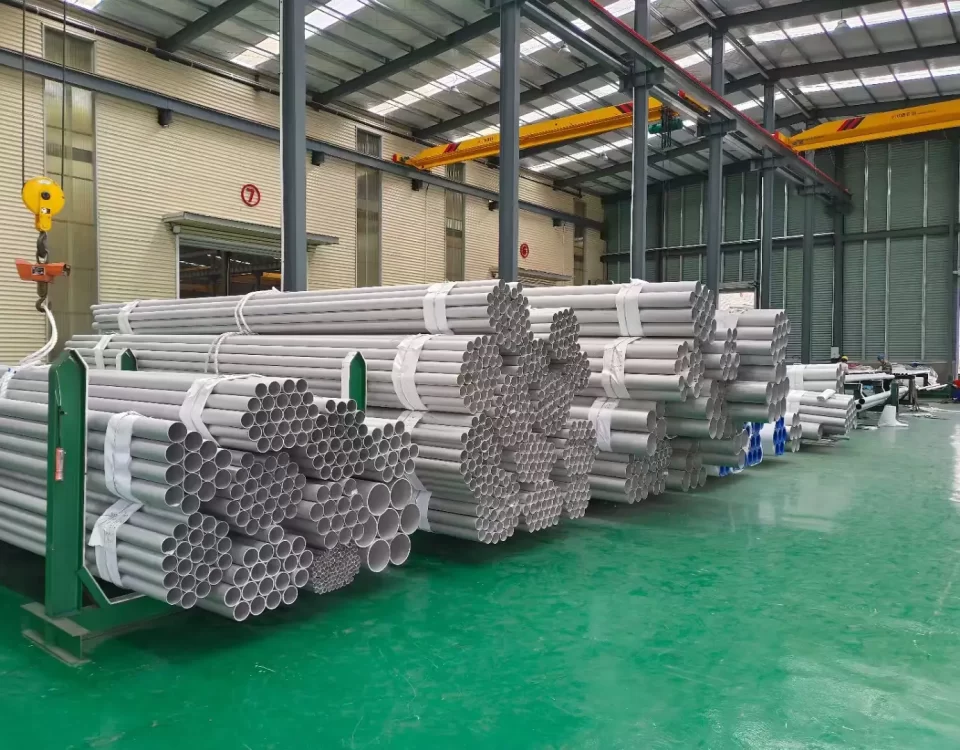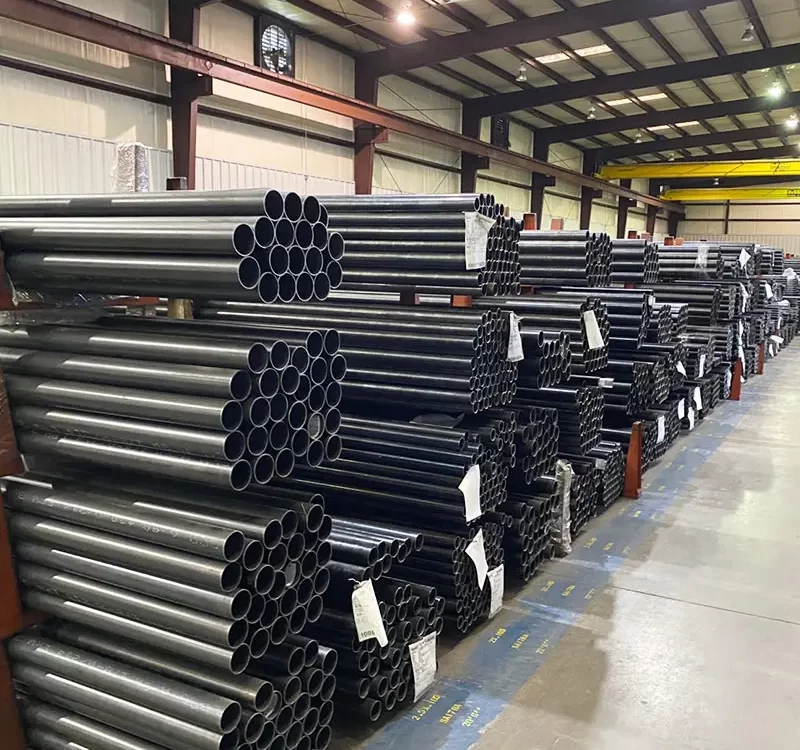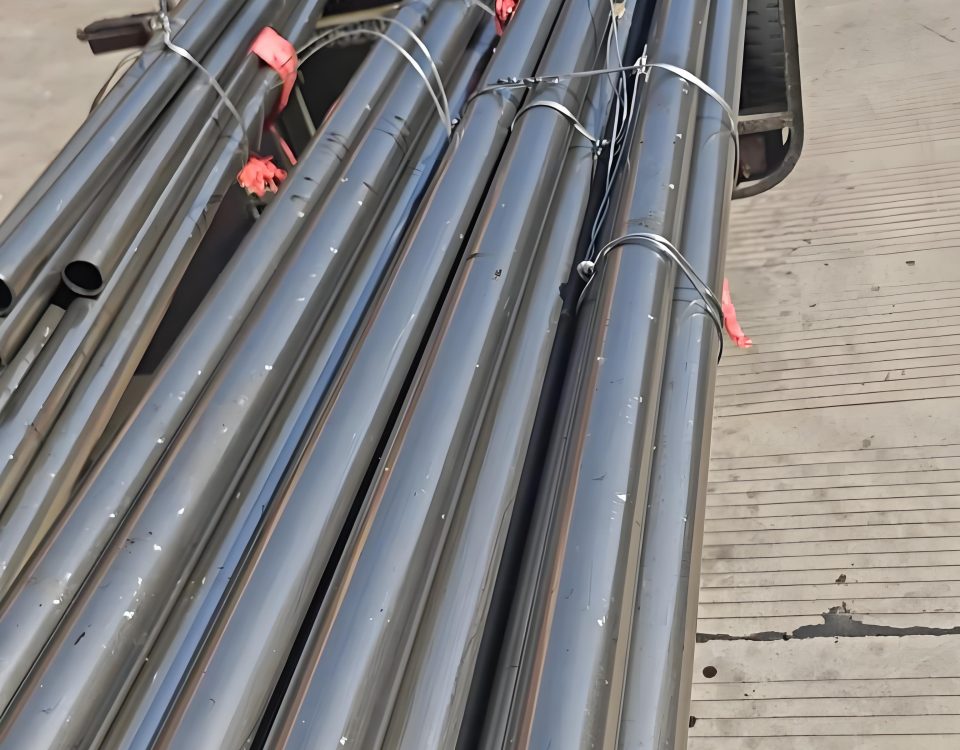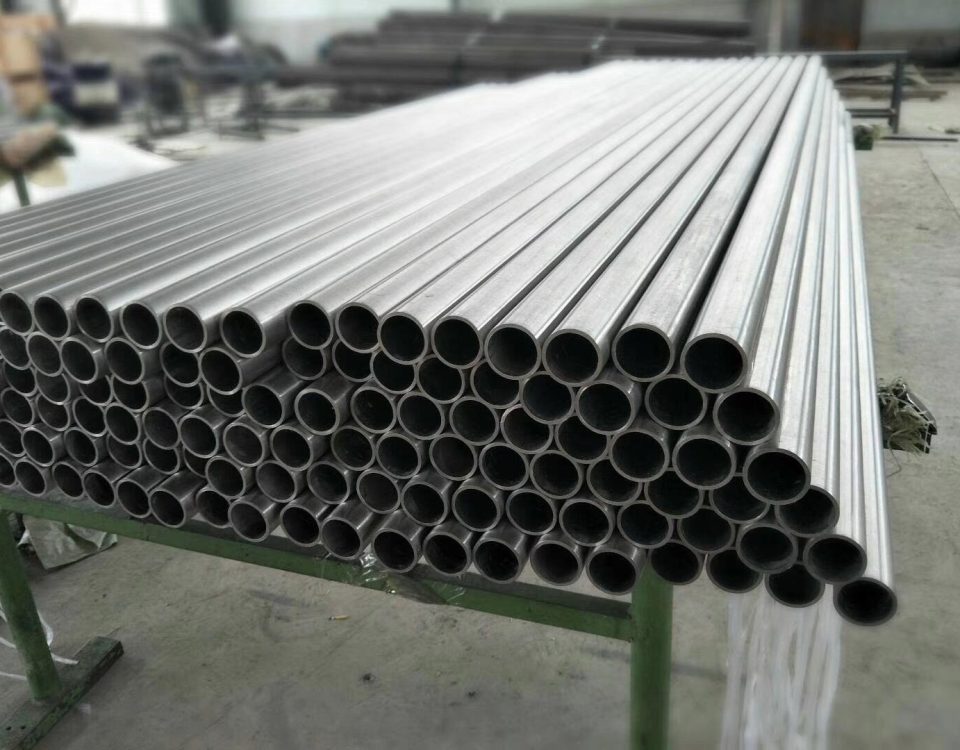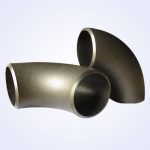
Cobos de tubería de acero al carbono basados en la corriente remota de campo Eddy
Septiembre 20, 2025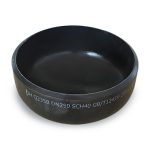
Tapas de tubería de acero al carbono
Septiembre 26, 2025La piedra angular industrial de Pure Nickel: Níquel 200 (UNS N02200) Tubos de aleación – Una visión general completa
Capítulo I: Introducción - Definición, Estado histórico, y valor central del níquel comercialmente puro
1.1 La importancia del níquel comercialmente puro y la génesis del níquel 200
En los entornos de producción industriales altamente especializados y exigentes de hoy en día, Los requisitos de rendimiento del material se extienden mucho más allá de la resistencia mecánica básica. Al enfrentar químicos agresivos corrosión, necesidades eléctricas/térmicas especializadas, y estrictos estándares de pureza del producto, Los materiales metálicos ordinarios a menudo resultan inadecuados. Es en este contexto que Aleaciones de níquel-base, particularmente Níquel 200 (UNS N02200), reconocido como “Níquel comercialmente puro,” se han establecido como una base indispensable para numerosos procesos industriales críticos, Gracias a su combinación única de alta pureza química y propiedades sobresalientes.
Níquel 200 no es una nueva innovación; Su historia se remonta a la década de 1930, Inicialmente desarrollado por la antigua compañía internacional de níquel (Inco). Representa una de las aleaciones de níquel de mayor pureza disponibles comercialmente, Por lo general, requiere un contenido de níquel de no menos de \(99.0\%\). Esta pureza excepcional lo dota con un conjunto único de características físicas y químicas., notablemente su inigualable estabilidad y resistencia a la corrosión en agresivo medios alcalinos cáusticos—Un posición que mantiene inquietantemente en el sector de procesamiento químico crítico.
Nuestra empresa se especializa en la R&D y fabricación de Níquel 200 / Aleación de níquel uns N02200 Tubos. Como componente crítico para la transferencia de fluidos, intercambio de calor, y soporte estructural, La calidad de nuestro tubo determina directamente la confiabilidad y la vida útil de todo el sistema.. Reconocemos que la fabricación de un níquel compatible 200 El tubo no es simplemente un proceso de formación de metales; es una empresa sistémica que involucra metalurgia, mecanizado de precisión, pruebas no destructivas (END), y estricto control de calidad. Proporcionamos más que solo tubos de metal; Ofrecemos un compromiso a largo plazo con la continuidad industrial, pureza del producto, y seguridad, arraigado en una comprensión profunda de la ciencia de los materiales y una búsqueda intransigente de la excelencia en la fabricación.
1.2 Distinción técnica clave: Níquel 200 vs. Níquel 201 y el límite de temperatura
Antes de profundizar en los detalles de rendimiento del níquel 200, Es crucial aclarar la diferencia significativa entre él y su contraparte de carbono inferior, Níquel 201 (US N02201). Esta distinción representa un criterio técnico vital para la selección de aleaciones:
- Níquel 200 (UNS N02200): El contenido de carbono se controla hasta un máximo de \(0.15\%\).
- Níquel 201 (US N02201): El contenido de carbono está estrictamente controlado para ser debajo \(0.02\%\).
Esta diferencia aparentemente menor en el contenido de carbono conduce a una divergencia importante en el rendimiento de la aplicación: Níquel 200 es susceptible a la grafitización o sensibilización (precipitación de carburo intergranular) Cuando se expone a temperaturas que exceden \(315^ circ text{C}\) (\(600^ circ text{F}\)) por períodos prolongados, que aumenta su sensibilidad a la corrosión intergranular. Por lo tanto, **Níquel 200 es recomendado principalmente por ingenieros metalúrgicos para entornos de servicio a continuación \(315^ circ text{C}\)**.
Níquel 201 fue diseñado específicamente para superar este problema de sensibilización de alta temperatura y es ** adecuado para entornos anteriores \(315^ circ text{C}\)**, Asegurar que el material mantenga su integridad corrosiva a temperaturas operativas elevadas. Como fabricante de tubos profesionales, Controlamos meticulosamente la composición química de las materias primas y puede suministrar de forma flexible ni níquel 200 o níquel 201 Basado en los requisitos específicos de la temperatura de funcionamiento y la aplicación del cliente, Asegurar la selección de materiales científicas y apropiadas.
Capítulo II: Profundizar en el níquel 200 Ciencia de material de aleación: La lógica de la pureza y el rendimiento
2.1 Composición química: Pureza como base del rendimiento
El valor central de Níquel 200 reside en su pureza química. La matriz de níquel de alta pureza no solo garantiza su excelente resistencia a la corrosión, sino que también ofrece propiedades físicas funcionales únicas, tales como alta conductividad eléctrica y ferromagnetismo. Mesa 1 Detalla los requisitos primarios de composición química estipulados por el estándar UNS N02200 (Referencia ASTM B163/B161), que sirve como el punto de referencia obligatorio para nuestra producción de tubos:
| Elemento | Estándar de UNS N02200 (ASTM B163/B161) Contenido máximo (%) | Importancia e impacto |
|---|---|---|
| Níquel (Ni) + Cobalto (tubo de aleación) | Min. \(99.00\) | Asegura la resistencia a la corrosión primaria, alta ductilidad, conductividad, y propiedades magnetoestrictivas. |
| Manganeso (C) | Max. \(0.15\) | Afecta la sensibilidad a la corrosión intergranular (sensibilización) a altas temperaturas. High Content C es el diferenciador clave de NI 201. |
| Cobre (Cu) | Max. \(0.25\) | Estrictamente controlado para evitar comprometer la estabilidad de Pure Nickel en soluciones cáusticas álcali. |
| Hierro (Fe) | Max. \(0.40\) | Elemento de impureza, afecta la pureza, conductividad eléctrica, y propiedades magnéticas. Alto \(\texto{Fe}\) El contenido reduce la conductividad. |
| Manganeso (Minnesota) | Max. \(0.35\) | Desoxidante común, controlado para mantener la pureza y afecta la soldabilidad. |
| Silicio (Si) | Max. \(0.35\) | Desoxidante común, El contenido excesivo reduce la ductilidad. |
| Azufre (S) | **Max. \(0.01\)** | **Debe ser extremadamente bajo. ** Los sulfuros perjudican gravemente la tenacidad de alta temperatura, soldabilidad, y resistencia a la corrosión, causando fácilmente la falta de calor. |
| Otros | Max. \(0.10\) | Control de las impurezas residuales totales para garantizar una alta pureza en general. |
Mesa 1: Requisitos de composición química para níquel 200 (UNS N02200) Tubos de aleación
2.2 Propiedades físicas: La base de las aplicaciones funcionales
Las propiedades físicas de la aleación de níquel de alta pureza lo hacen único en muchos sectores, particularmente en transmisión eléctrica y termodinámica. Níquel 200 es ferromagnético (Debajo de su temperatura curie de aproximadamente \(360^ circ text{C}\)) y posee una alta conductividad térmica y eléctrica, una ventaja que carecen de muchos otros superalorios basados en níquel.
| Propiedad física | Valor típico | Unidad | notas |
|---|---|---|---|
| Densidad | \(8.89\) | \(\texto{gramos/cm}^3\) | Relativamente pesado, Reflejando el embalaje de alta densidad de átomos de níquel. |
| Intervalo de fusión | \(1435 – 1446\) | \(\texto{^ circ text{C}}\) | Punto de fusión alto, Préstamo de buena estabilidad térmica para aplicaciones de alta temperatura. |
| Temperatura curie | \(360\) | \(\texto{^ circ text{C}}\) | Exhibe el ferromagnetismo por debajo de esta temperatura. |
| Coeficiente de expansión térmica | \(13.3 \Times 10^{-6}\) | \(\texto{K}^{-1}\) | Valor promedio entre \(20^ circ text{C}\) y \(100^ circ text{C}\). |
| Conductividad térmica | \(70.2\) | \(\texto{W/(m}\CDOT Texto{K)}\) | Valor \(21^ circ text{C}\). Mejor que el acero inoxidable y muchas aleaciones Ni-CR, beneficioso para el intercambio de calor. |
| Conductividad eléctrica | \(\aproximadamente 15 – 20\) | \(\%\) IACS | Significativamente más alto que la mayoría de las aleaciones de níquel, acercándose a la conductividad del cobre, Ideal para aplicaciones electrónicas. |
| Módulo de elasticidad | \(205\) | \(\texto{GPa}\) | Refleja la rigidez del material, Comparable al acero. |
Mesa 2: Propiedades físicas típicas del níquel 200 Tubos de aleación
2.3 Propiedades mecánicas: Personalización a través del trabajo en frío y recocido
Como un níquel comercialmente puro, Níquel 200 Características excelentes ductilidad y buenas características de trabajo en frío, facilitando el dibujo y el rodaje de precisión en frío, un requisito crucial para fabricar paredes delgadas, tubos de alta precisión. Las propiedades mecánicas finales del tubo dependen en gran medida de su tratamiento térmico final (p.ej., condición recocida o dibujada en frío).
Mesa 3 Enumera los objetivos de propiedad mecánica general para ** recocido ** Níquel 200 tubos, Parámetros que deben verificarse a través de pruebas de tracción dentro de nuestro sistema de control de calidad:
| Característica mecánica | Valor típico recocido | Unidad | ASTM B163 Requisito mínimo (Min.) |
|---|---|---|---|
| Resistencia a la tracción | \(400 – 550\) | \(\texto{MPa}\) | \(380\) |
| resistencia a la fluencia (0.2% Compensar) | \(105 – 200\) | \(\texto{MPa}\) | \(105\) |
| Alargamiento | \(45 – 60\) | \(\%\) | \(35\) |
| Dureza Rockwell | \(60 – 75\) | \(\texto{HRB}\) | – |
Mesa 3: Objetivos de propiedad mecánica para níquel 200 Tubos de aleación (Condición recocida)
A través de un control preciso de la relación de reducción de trabajo en frío y el proceso de recocido posterior, Podemos adaptar la final del tubo temperamento. Por ejemplo, el Retirado a frío La condición puede aumentar significativamente su resistencia al rendimiento (hasta \(450 \texto{MPa}\) o más) a costa de cierta ductilidad, haciéndolo adecuado para aplicaciones que requieren mayor resistencia estructural. Esta capacidad precisa para ajustar las propiedades mecánicas finales resalta nuestra profundidad de experiencia en la fabricación de tubos.
Capítulo III: Profundizar en la resistencia de corrosión superior del níquel 200
3.1 los “Rey de la corrosión” en medios alcalinos cáusticos: Competencia central
Níquel 200 gana su reputación como el “Rey de la corrosión” principalmente de su resistencia inigualable a la corrosión en Alcalí cáustico como hidróxido de sodio (\(\texto{Naóbra}\)) e hidróxido de potasio (\(\texto{Koh}\)). Estos productos químicos agresivos, Incluso a altas concentraciones y temperaturas, atacar severamente a la mayoría de los aceros inoxidables y aleaciones de níquel-cromo-hierro.
Mecanismo de resistencia a la corrosión del níquel 200: La superficie del níquel forma rápidamente un delgado, denso, y altamente estable película de óxido pasivo (\(\texto{NiO}\)). Esta película de óxido es químicamente inerte y extremadamente estable en soluciones alcalinas fuertes. Aisliza efectivamente el sustrato metálico del medio corrosivo, proporcionando superior, Protección de corrosión a largo plazo. La estabilidad de esta película pasiva es el factor crucial que permite el níquel 200 Para superar a otras aleaciones.
- Sosa cáustica (\(\texto{Naóbra}\)) Aplicaciones: Níquel 200 exhibe un excelente rendimiento en casi todas las concentraciones y temperaturas de \(\texto{Naóbra}\) soluciones. En la industria de clor-alcali, donde se evapora el agua para concentrarse \(\texto{Naóbra}\), Níquel 200 Los tubos son el ** Material estándar de elección ** para los tubos de calefacción y evaporadores, garantizar una larga vida útil del equipo y la pureza del \(\texto{Naóbra}\) producto.
- **Reiterar los límites de alta temperatura:** los \(315^ circ text{C}\) El límite de temperatura es vital. Para un servicio cáustico de alta temperatura por encima de este umbral, Lo recomendamos ** Usando el carbono ultra bajo Níquel 201 para mitigar el riesgo de sensibilización y garantizar la seguridad de la operación a largo plazo.
3.2 Comportamiento complejo en ambientes ácidos y medios acuosos
La resistencia al ácido del níquel 200 es selectiva y altamente depende del tipo de ácido y del estado de oxidación de la solución:
- **Reducción de ácidos:** En no oxidación y desasimado Soluciones de ácido clorhídrico (\(\texto{HCL}\)) y ácido sulfúrico (\(\texto{H}_2 texto{ENTONCES}_4\)), Níquel 200 posee algo de tolerancia. La condición crítica es la desauración. La presencia de uniforme trazas de oxígeno u agentes oxidantes (como \(\texto{Fe}^{3+}\) iones) Desglosará la película pasiva formada en el entorno reductor, causando un fuerte aumento en la tasa de corrosión.
- **Ácidos oxidantes:** Níquel 200 **es inadecuado ** para ácidos oxidantes fuertes como el ácido nítrico (\(\texto{HNO}_3\)) o ácido sulfúrico concentrado. En estos medios, La tasa de corrosión es prohibitivamente alta. Mayor CR o MO que contienen aleaciones (como \(\texto{Inconel}\) o \(\texto{Hastelloy}\) serie) generalmente se requieren aquí.
- **Medios acuosos y agua salada:** En soluciones salinas neutrales y alcalinas, así como agua fresca estacionaria o de baja velocidad, La resistencia a la corrosión es buena. sin embargo, en agua de mar de alta velocidad o en áreas estancadas con depósitos, el riesgo de picaduras y Corrosión de grietas incremento. Para aplicaciones que requieren una mejor resistencia al agua de mar, aleaciones con mayor resistencia a los iones de cloruro, como \(\texto{Ni-cu}\) aleaciones de la serie (\(\texto{Monel 400}\)), a menudo se eligen.
3.3 Resistencia a gases halógenos secos y oxidación de alta temperatura
- **Halógenos secos:** A altas temperaturas, Níquel 200 muestra una buena resistencia a la corrosión en gases halógenos secos como el cloro (\(\texto{CL}_2\)) y flúor (\(\texto{F}_2\)). sin embargo, Esto requiere que la atmósfera sea ** absolutamente seca **, A medida que la presencia de humedad acelera significativamente la reacción de corrosión.
- **Oxidación a alta temperatura:** En seco, aire oxidante, La resistencia de los níquel de los 200 es buena, utilizable hasta aproximadamente \(1200^ circ text{C}\). sin embargo, Si el medio ambiente presenta ** compuestos de azufre ** o ** reduciendo gases **, El rendimiento de alta temperatura del material a base de níquel se ve severamente comprometido. El níquel reacciona con el azufre para formar sulfuros de níquel de bajo punto de fusión, Potencialmente, lo que lleva a ** Corto caliente **.
Capítulo IV: Sistema de fabricación de precisión y garantía de calidad para níquel 200 Tubos
4.1 Proceso de fabricación: Desde palanquilla hasta tubo sin costuras de alta precisión
Nuestra empresa está comprometida con la fabricación de alta calidad Níquel 200 Tubos sin costuras y soldados. Tubos sin costura, Debido a la uniformidad de su espesor de la pared superior, mayor integridad estructural, y capacidad de soporte de presión, son la opción ideal para la presión crítica y las aplicaciones de alta temperatura.
4.1.1 Fabricación de tubos sin costura: El arte del trabajo en frío
Fabricación \(\texto{Níquel 200}\) Tubos sin costura es un complejo, Proceso de trabajo en frío de varios pasos que exige una precisión extrema:
- **Preparación y análisis de materia prima:** Comience con billets redondos sólidos (Palanquilla) que han sido estrictamente derretidos y analizados, Conocer el \(\texto{UNS N02200}\) requisitos. Este es el primer paso para garantizar la pureza del producto..
- **Perforación/extrusión en caliente:** La palanquilla sólida se calienta y se perfora o procesa mediante extrusión para crear una carcasa de pared gruesa inicial.
- **Dibujo en frío o enrollamiento frío:** Este es el ** Core Step ** para la fabricación de níquel de precisión 200 tubos. A través de repetidos ciclos de dibujo en frío/rodamiento, El tubo se reduce gradualmente en diámetro y espesor de la pared.. Este proceso mejora significativamente el acabado de la superficie y la precisión dimensional al tiempo que introduce ** Work Working ** que mejora la resistencia mecánica.
- **Recocido intermedio y final:** Porque el níquel 200 se endurece rápidamente durante el trabajo en frío, El recocido intermedio y final es esencial. **Objetivo:** Para restaurar la ductilidad del metal, Aliviar el estrés interno, y permita que el tubo sea procesado o llevado a su estado suavizado final requerido. **Requisito clave:** El recocido debe realizarse en un ** Atmósfera de inerte o hidrógeno estrictamente controlado ** (p.ej., **Recocido brillante, LICENCIADO EN LETRAS**) Para evitar la oxidación de la superficie y mantener una limpieza, acabado alto.
- **Trasto de acabado y superficie:** Después del tamaño final, Los tubos se someten a encurtido o pulido mecánico/químico para eliminar los óxidos y contaminantes de la superficie residual, Lograr el acabado de la superficie lisa (\(\texto{Real academia de bellas artes}\) valor) Requerido por el cliente.
4.1.2 Fabricación de tubos soldados: Fusión de alta pureza
Los tubos soldados se forman mediante níquel de alta pureza enrollable 200 desnudarse en forma tubular y luego usar un soldadura de arco de tungsteno de gas continuo (\(\texto{Gtaw / giro}\)) proceso para fusionar la costura longitudinal con alta pureza. Los tubos soldados a menudo experimentan un trabajo en frío posterior y recocido para eliminar las tensiones de soldadura y mejorar las dimensiones geométricas. Son adecuados para no alta presión, Transferencia de fluido no crítico debido a su rentabilidad y flexibilidad dimensional.
4.2 Control de calidad estricto y pruebas no destructivas (END) Sistema
Para \(\texto{Níquel 200}\) Tubos utilizados en crítica, entornos agresivos, Un sistema de control de calidad robusto es la línea de vida que garantiza la confiabilidad del producto. Nuestro sistema de calidad se adhiere estrictamente a \(\texto{ISO 9001}\) and fully complies with international standards such as $\text{ASTM}$, $\text{ASME}$, y $\text{PED}$.
| Elemento de inspección | Método | Objetivo de QC |
|---|---|---|
| **Composición química ** | Espectroscopia, Química húmeda | Asegurar \(\texto{Ni} \ge 99.0\%\) y que impurezas como \(\texto{C}\) y \(\texto{Fe}\) encontrarse \(\texto{UNS N02200}\) normas. Este es el primer punto de control crítico. |
| **Dimensiones geométricas ** | Cmm, Medición láser de precisión | Control estricto sobre OD, espesor de la pared (WT), ovalidad, rectitud, y tolerancias de longitud. |
| **Defectos de la superficie ** | Inspección visual, Prueba de penetrante líquido (PT) | Verifique si hay grietas, arañazos, pliegues, y delaminación para garantizar la integridad de la superficie. |
| **Defectos internos ** | Prueba de ultrasonido (UT), Prueba de corrientes de Foucault (En) | Detectar inclusiones internas, vacíos, Falta de penetración de soldadura, y otros defectos ocultos, Garantizar la solidez estructural. |
| **Integridad de presión ** | Prueba hidrostática, Prueba neumática | Verifique la integridad estructural y la fugas de la presión interna especificada: marcas para aplicaciones de recipientes a presión. |
| **Propiedades mecánicas ** | Ensayo de tracción, Prueba de aplanamiento, Examen de dureza | Verifique que la resistencia a la tracción, resistencia a la fluencia, alargamiento, y la ductilidad satisface los requisitos estándar y las necesidades personalizadas. |
| **Corrosión intergranular ** | Prueba de corrosión intergranular (p.ej., ASTM A262 Práctica C) | Asegúrese de que no se haya producido sensibilización en las zonas afectadas por el calor después de recocer o soldar; especialmente crítico para \(\texto{Ni} 201\). |
Mesa 4: Control de calidad clave y elementos de prueba no destructivos para níquel 200 Tubos
Proporcionamos Informes de pruebas de materiales (MTRS) por cada lote de tubos, incluyendo $3.1$ o \(3.2\) certificados (certified by independent third-party inspection agencies like $\text{TUV/SGS}$ a petición), asegurando Trazabilidad completa de materia prima a producto final. Este es un compromiso serio con nuestra clientela global de alta gama.
Capítulo V: Aplicaciones industriales clave y consideraciones económicas del níquel 200 Tubos
5.1 Industrias químicas y petroquímicas: El corazón del manejo cáustico
Este es el mercado principal y más crítico para el níquel. 200, Centrado en su resistencia superior a álcalis cáustico:
- **Producción de refrescos cáusticos:** **Paquetes de tubo de evaporador:** En la industria de clor-alcali, concentración \(\texto{Naóbra}\) La solución es un paso central que involucra la evaporación de alta temperatura. Níquel 200/201 tubos, Debido a su incomparable \(\texto{Naóbra}\) revestimiento La tubería que se extiende desde la superficie del suelo hacia el interior del pozo para revestir el pozo, se utilizan ampliamente para fabricar tubos de calefacción y evaporador, garantizar una larga vida útil del equipo y la pureza del \(\texto{Naóbra}\) producto. **Intercambiadores y reactores de calor:** Tuberías y equipos para transferir y procesar otros productos químicos alcalinos de alta concentración, tales como \(\texto{Koh}\).
- **Procesamiento orgánico:** Níquel 200 Resiste una corrosión leve mientras evita la contaminación metálica de los iones al procesar productos químicos orgánicos como ácidos grasos, fenoles, y metanol, o durante los procesos de refinación de petróleo como la desulfuración de asfalto.
5.2 Industrias electrónicas e eléctricas: La cadena de valor de alta conductividad
La alta conductividad eléctrica es el factor clave que permite el papel de Nickel 200 en el sector electrónico, convirtiéndolo en un material conductor de alto rendimiento:
- **Batería de litio/conexiones y carcasas:** En baterías de iones de litio o NI-CD de alta potencia, Níquel 200 tubos (o lámpara) se utilizan como cables de corriente, tripas de la batería, o conectores internos, Aprovechando su baja resistencia eléctrica y excelente soldadura para la transmisión de corriente confiable.
- **Dispositivos electro-vacío y elementos de calefacción:** Níquel 200 se utiliza como soporte estructural o componentes emisores de electrones en tubos de vacío, tubos de rayos de cátodo, y resistencias de precisión, capitalizando su baja tasa de evaporación, punto de fusión alto, y buena conductividad.
5.3 Procesamiento de alimentos e industrias farmacéuticas: La última demanda de pureza
En industrias relacionadas con la salud, Los productos de corrosión de materiales deben ser extremadamente bajos para evitar la contaminación:
- **Equipo de grado alimenticio:** Intercambiadores de tuberías y calor utilizados para procesar los ácidos grasos, glicerina, y agua de alta pureza. La estabilidad química de Nickel 200 asegura la pureza del producto alimenticio final, meeting standards like $\text{FDA}$ y $\text{USP}$.
- **Síntesis farmacéutica:** En síntesis de drogas específica, destilación, y procesos de cristalización, Níquel 200 Los tubos se utilizan en reactores y sistemas de transferencia para evitar la contaminación de iones metálicos, proteger catalizadores sensibles y productos finales.
5.4 Consideraciones económicas: Costo total del ciclo de vida (TLC) Ventaja
Aunque el costo de adquisición inicial de una aleación de níquel como el níquel 200 es más alto que el acero inoxidable estándar, Ofrece un superior Costo total del ciclo de vida (\(\texto{TLC}\)) ventaja en condiciones de servicio agresivas:
- **Minimizar el tiempo de inactividad:** En la industria alcalúa cáustica, Cualquier falla de corrosión de equipo inesperado conduce a costosas pérdidas de tiempo de inactividad y producción. La vida útil ultra larga de Nickel 200 significa una frecuencia significativamente reducida de mantenimiento y reemplazo, entregar beneficios económicos que superan con creces el costo del material inicial.
- **Mantener la eficiencia de producción:** Su conductividad térmica superior y resistencia al ensuciamiento (especialmente en alta concentración \(\texto{Naóbra}\) evaporadores) Ayuda a mantener una alta eficiencia de intercambio de calor con el tiempo, reduciendo así el consumo de energía y los costos operativos.
- **Reducción del riesgo de contaminación:** En industrias de alta pureza, Una sola instancia de contaminación puede arruinar un lote completo, resultando en pérdidas económicas masivas. Níquel 200 Asegura la limpieza del proceso de producción y la estabilidad de la calidad del producto, Prevención de costos ocultos.
Capítulo nosotros: Pautas de fabricación para níquel 200 Tubos: La esencia de la práctica de ingeniería
6.1 Procedimientos de soldadura: Garantizar la pureza y la integridad
Níquel 200 exhibe una buena soldabilidad, pero se deben seguir procedimientos estrictos para evitar la contaminación, crujido caliente, y sensibilización a alta temperatura:
- **Limpieza:** **Esta es la regla cardinal ** para soldar aleaciones de níquel. La superficie del tubo y los biseles de la junta deben limpiarse a fondo con cepillos y solventes de acero inoxidable antes de soldar para eliminar todo el aceite, escala, pintura, y marcas (Especialmente las marcas de crayón de bajo punto de fusión). Las aleaciones de níquel son altamente susceptibles a impurezas de bajo punto de fusión como el azufre y el fósforo, que fácilmente causan ** grietas en caliente **.
- **Método de soldadura:** Uso recomendado de ** soldadura de arco de tungsteno de gas (\(\texto{Gtaw / giro}\))** o \(\texto{Mig/gmaw}\). Estos métodos proporcionan protección de gas inerte, minimizar la oxidación y la nitridación en la zona de soldadura.
- **Metal de relleno:** Los metales de relleno más recomendados para \(\texto{Ni} 200\) Los tubos son **\(\texto{Tierra}-1\) (AWS A5.14)** o **\(\texto{Ni} 208\)**. Elegir el metal de relleno apropiado es fundamental para garantizar que la junta de soldadura posee resistencia a la corrosión y resistencia mecánica que coincida con el metal base.
- **Recocido de alivio del estrés posterior a la solilla:** Si el tubo se ha sometido a un trabajo en frío significativo antes de soldar, o si hay una alta concentración de estrés en el área de soldadura, **Se puede considerar el recocido de alivio del estrés posterior al estrés **. Esto reduce el estrés por tracción residual, evitando efectivamente ** grietas por corrosión de estrés (\(\texto{CCS}\))** En medios específicos como alcalíes cáustico caliente.
6.2 Mecanizado y pautas de formación de frío
Debido a la alta ductilidad de Nickel 200 y una tasa de endurecimiento de trabajo relativamente rápido, Se deben tomar precauciones especiales durante el mecanizado y la formación de frío:
- **Mecanizado:** Níquel 200 es algo pegajoso y tiende a acumular herramientas de corte. Esto requiere el uso de parámetros de corte caracterizados por ** alta potencia, baja velocidad, y altas tasas de alimentación **. Usa afilado, rango positivo, Herramientas de carburo de alta resistencia, Junto con un amplio fluido de corte para un enfriamiento y lubricación adecuados para llevar el calor y evitar el desgaste de la herramienta y la adhesión del material.
- **Conformado en frío:** La excelente ductilidad de Nickel 200 hace que sea fácil realizar operaciones de formación en frío como flexión, resplandeciente, y swaging. sin embargo, porque ** el trabajo se endurece rápidamente **, Para grandes requisitos de deformación (p.ej., Doblado, dibujo profundo), Puede ser necesario realizar uno o más ** recocido intermedio ** tratamientos durante la formación para restaurar la ductilidad y evitar el agrietamiento debido al endurecimiento.
Capítulo VII: Cumplimiento de estándares, Servicios personalizados, y nuestro compromiso corporativo
7.1 Estándares internacionales y cumplimiento de especificaciones
Nuestro níquel fabricado 200 / Los tubos de UNS N02200 cumplen estrictamente con los principales estándares y especificaciones industriales del mundo. Adherirse a estos estándares no es solo un requisito previo para el acceso al mercado, sino también una demostración de nuestro compromiso con la calidad del producto..
| Nombre estándar | Descripción | Formulario de producto aplicable |
|---|---|---|
| **ASTM B161 ** | Tubería y tubo de níquel sin costura | Aplicaciones de tuberías de paredes gruesas, amplio rango de tamaño. |
| **ASTM B163 ** | Tubo de níquel sin costura para condensadores e intercambiadores de calor | Aplicaciones de intercambio de calor de paredes delgadas, Se requiere precisión dimensional de alta dimensión. |
| **ASME SB-161 ** | Corresponde a ASTM B161 para el código de la caldera y el recipiente a presión | Recipientes a presión y tuberías, Requiere cumplimiento de la certificación de seguridad. |
| **ASME SB-163 ** | Corresponde a ASTM B163 para el código de la caldera y el recipiente a presión | Aplicaciones de intercambio de calor del recipiente a presión, Requiere cumplimiento de la certificación de seguridad. |
| **DIN / EN 2.4066** | Designación de material estándar europeo para NI 200 | Aplicaciones europeas del mercado y proyectos. |
Mesa 5: Grandes estándares internacionales aplicables para níquel 200 Tubos de aleación
Our company possesses a complete quality management system capable of issuing Material Certificates compliant with $\text{EN 10204 3.1}$, y podemos coordinar con los clientes para obtener la certificación de ** agencias de inspección de terceros (\(3.2\)) ** Para garantizar la usabilidad y credibilidad global de nuestros productos.
7.2 Servicios personalizados que abordan las necesidades específicas del cliente
Entendemos profundamente que los tubos de especificación estándar a menudo no pueden cumplir con los requisitos de todas las condiciones de operación críticas. Por lo tanto, Ofrecemos servicios de fabricación altamente personalizados, Trabajar en estrecha colaboración con los clientes para resolver desafíos de ingeniería:
- **Personalización extrema de dimensiones y tolerancias:** Podemos fabricar tubos que van desde micro-cubo hasta tuberías de gran diámetro, con varios espesores y longitudes de la pared, y endurecer tolerancias para proyectos específicos para satisfacer las demandas de instalación de precisión ultra alta.
- **Condiciones especiales de temperamento:** Basado en las necesidades precisas de fuerza del cliente, dureza, y ductilidad, Ofrecemos varias condiciones de temperamento a través de procesos de tratamiento térmico personalizados., incluyendo completamente ** recocido **, **Ligero en frío dibujado **, o ** estados de color frío pesado **.
Capítulo VIII: Extensiones metalúrgicas: microestructura, Análisis de fallas, y aplicaciones de ultra precisión
8.1 La lógica de microestructura y rendimiento del níquel 200 Aleación
Desde una perspectiva microscópica, Níquel 200 es una solución sólida de una fase caracterizada por un ** cúbico centrado en la cara (\(\texto{FCC}\)) estructura cristalina **.
- **Estructura y ductilidad de la FCC:** los \(\texto{FCC}\) La estructura posee múltiples \(\texto{Sistemas de deslizamiento}\), cual es la razón fundamental de \(\texto{Níquel 200}\)La excelente ductilidad y dureza. Permite que el material se someta a la deformación plástica a través del movimiento de dislocación bajo cepas grandes sin fractura frágil inmediata.
- **Mecanismo de endurecimiento de trabajo:** Trabajo en frío (como dibujo en frío) introduce una gran cantidad de ** dislocaciones ** en el \(\texto{FCC}\) enrejado. Estas dislocaciones se enredan e se impiden mutuamente, Formando paredes de dislocación que obstruyen más flujo de plástico. El resultado macroscópico es un aumento significativo en la resistencia y la dureza del rendimiento.. De este modo, controlando con precisión la reducción de trabajo en frío y la temperatura de recocido, Podemos ajustar con precisión las propiedades mecánicas finales del tubo.
8.2 Aplicaciones de ultra precisión para requisitos de alta pureza
Aprovechando la tecnología ultra precisión de trabajo en frío y tratamiento de superficie, Somos capaces de suministrar tubos especializados más allá de las dimensiones estándar.:
- **Tecnología de micro-tubería:** Tubos de fabricación con diámetros más pequeños que \(1 \texto{mm}\) y espesores de la pared menos que \(0.1 \texto{mm}\). Esto requiere dibujo en frío ultra precisión de varias etapas y diarios de diamantes personalizados, todo mientras mantiene la pureza arriba \(99.0\%\). El micro-tubre es esencial para ** vainas protectoras del sensor de precisión **, **Dispositivos implantables médicos **, y ** elementos de intercambio de micro calor **.
- **Tubos de acabado de superficie ultra altura:** A través de acabado de superficie interna especializada (tales como el perfeccionamiento interno y ** Electropolización (\(\texto{EP}\))**), la rugosidad de la superficie interna (\(\texto{Real academia de bellas artes}\)) del tubo se puede reducir al nivel nanométrico. Esta superficie ultra suave evita efectivamente la retención de partículas, adhesión microbiana, y escalar dentro del fluido, Cumplir con las demandas extremas de limpieza de ** Entrega de fluidos de alta puridad semiconductores ** y la industria biofarmacéutica **.
Capítulo IX: Conclusión: garantizando la fiabilidad y la pureza
**Níquel 200 (UNS N02200)** Los tubos de aleación se han establecido como un material fundamental insustituible en varias industrias críticas, incluida la sustancia química, electrónica, alimentos, y farmacéutica, al tanto de su excepcional resistencia a la corrosión cáustica, Excelente conductividad eléctrica, buena estabilidad térmica, y características favorables de trabajo en frío.
Nuestra compañía, respaldado por profundo conocimiento metalúrgico, Tecnología de fabricación de precisión avanzada, y un estricto sistema de control de calidad, asegura que cada metro de níquel 200 El tubo que sale de nuestras instalaciones cumple o excede los estándares internacionales. Estamos comprometidos a proporcionarle:
- Una gama de productos integral: Cubriendo formas sin costuras y soldadas, Varios tamaños, y condiciones de temperamento.
- Trazabilidad completa: Asegurar que cada lote de tubo sea acompañado de completo $3.1$ / \(3.2\) documentos de certificación.
- Soporte técnico experto: Ayudarlo con una selección y diseño óptimos de material para maximizar los beneficios de rendimiento del níquel 200.
El níquel 200 El tubo es más que un producto de metal; Es nuestro firme compromiso con la seguridad industrial., eficiencia de producción, y pureza del producto. Esperamos colaborar con usted para avanzar en el progreso industrial.

